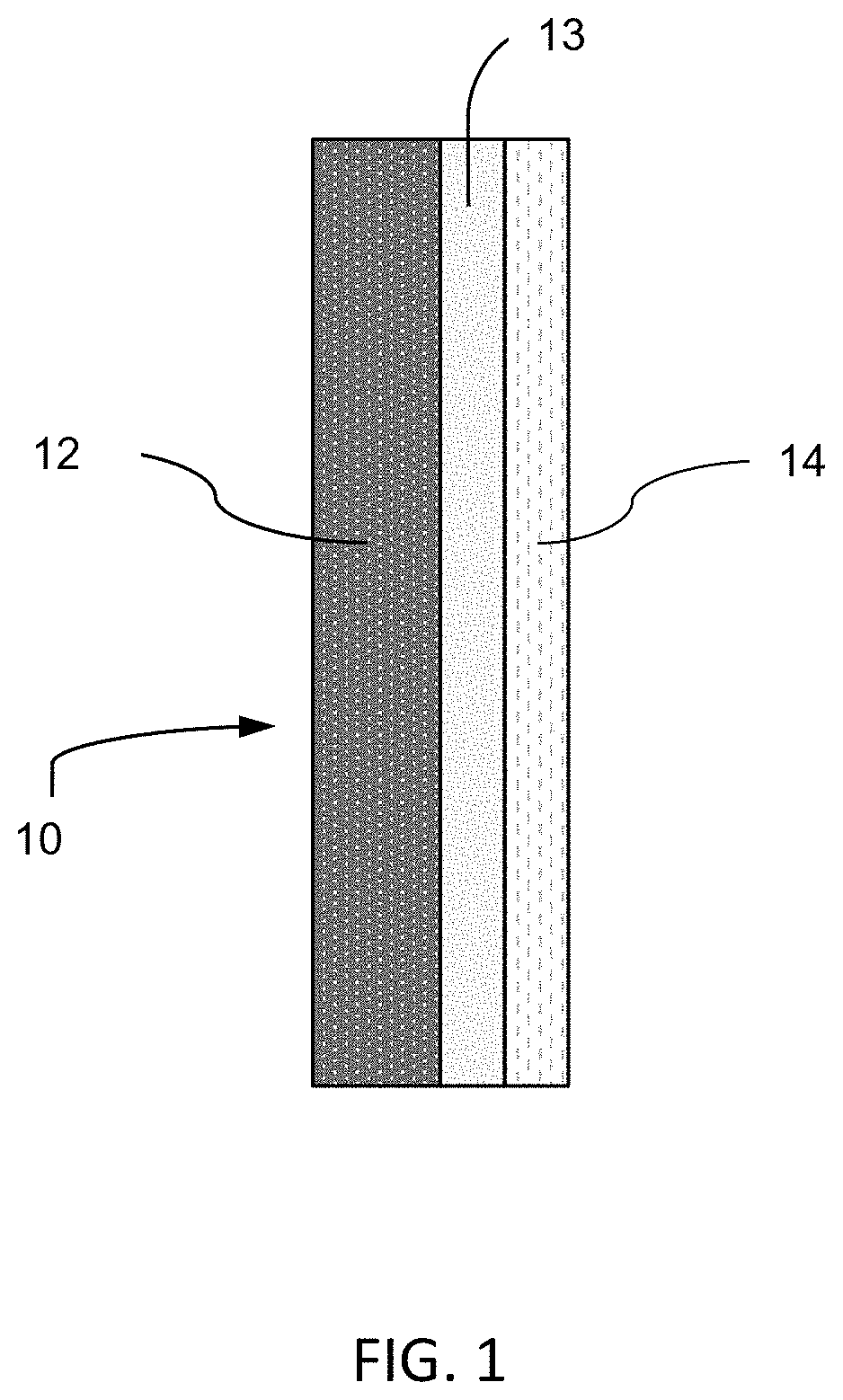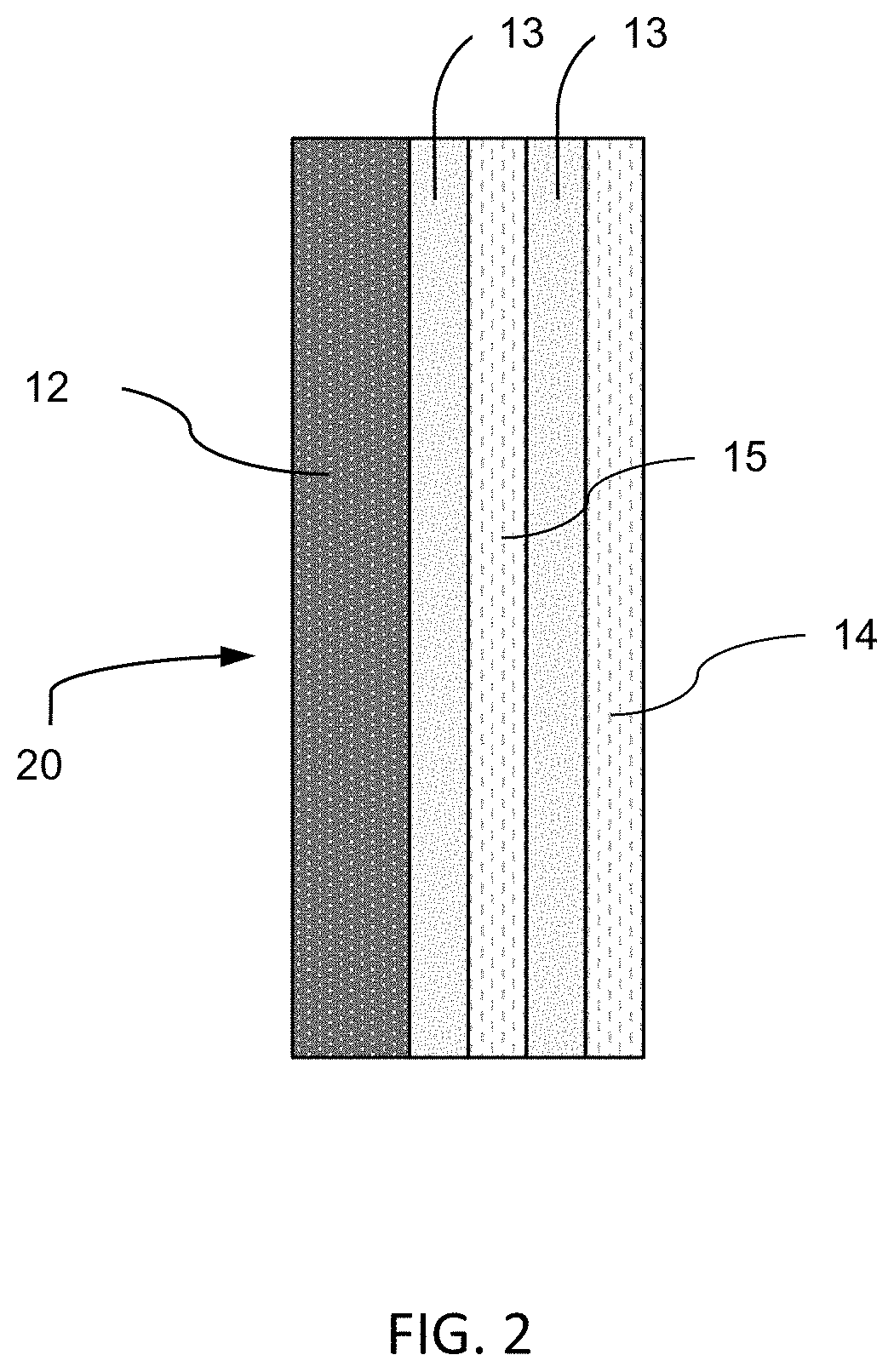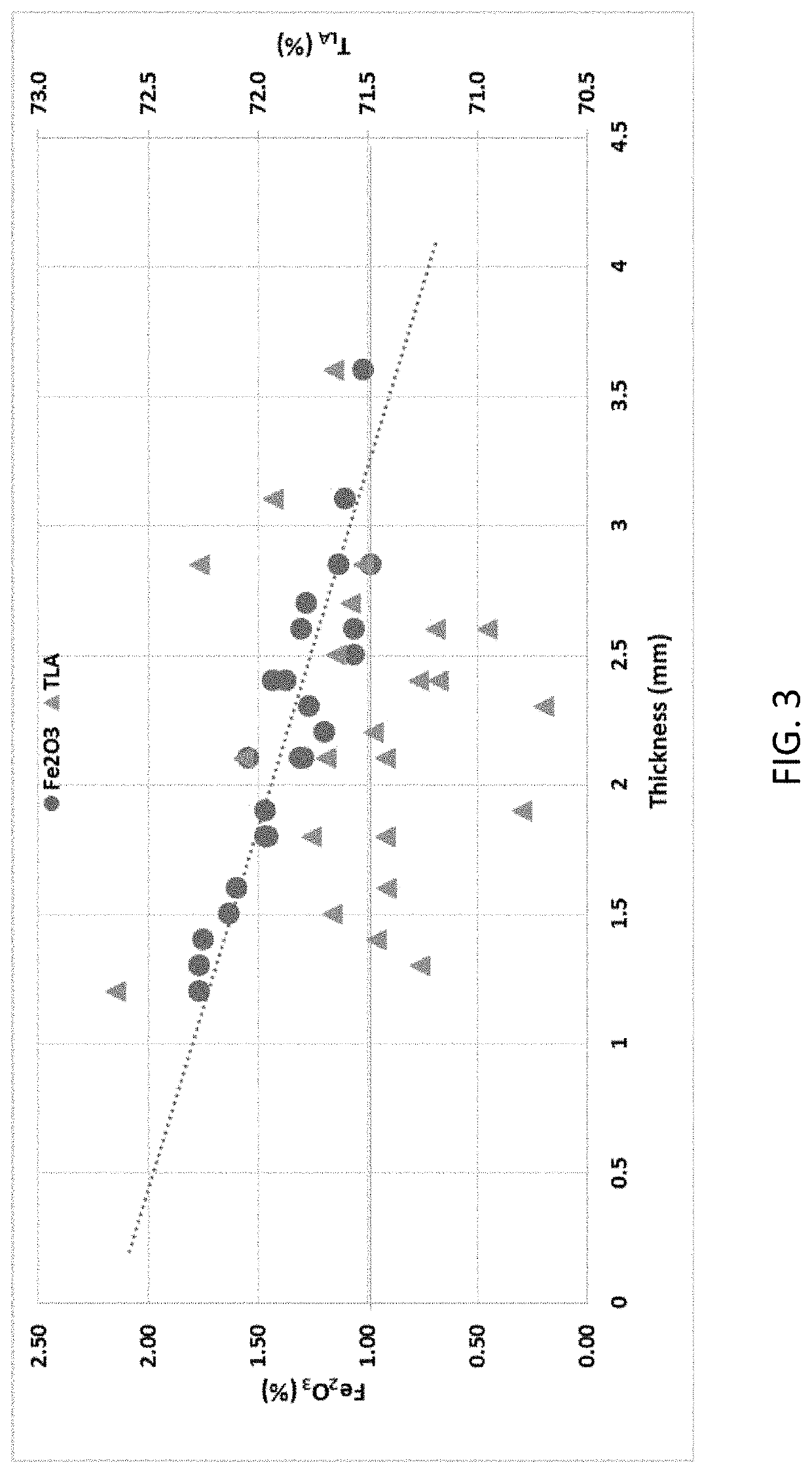Solar Control Thin Green Glass Composition
a technology of green glass and composition, applied in the direction of synthetic resin layered products, chemistry apparatus and processes, transportation and packaging, etc., can solve the problems of high cost as a raw material, high formulation cost, high cost, etc., and achieve the effect of reducing vehicle weight, reducing vehicle weight, and achieving solar equivalent performan
- Summary
- Abstract
- Description
- Claims
- Application Information
AI Technical Summary
Benefits of technology
Problems solved by technology
Method used
Image
Examples
first embodiment
[0093]In the present invention (FIG. 1), the laminated glazing is formed by three layers (10). An outer ply (12) is a solar control thin green glass in accordance with the present invention, with a thickness from about 0.7 to 3.0 mm. A polymer interlayer (13) is a conventional or acoustic polyvinyl butyral, PVB, with a thickness of 0.76 mm. And an inner ply (14) can be constructed of an ion exchanged and not ion exchanged commercial clear glass, of an ion exchanged and not ion exchanged borosilicate glass or of an ion exchanged and not ion exchanged alkali aluminosilicate glass (Corning Gorilla® Glass), with a thickness from about 0.5 mm to 2.0.
second embodiment
[0094]In a second embodiment, (FIG. 2), a triple laminated glazing configuration is formed by five layers (20). An outer ply (12) is a solar control thin green glass, with a thickness from about 0.7 to 3.0 mm. Two polymer interlayers (13) in which the polymer interlayer (13) is a conventional or acoustic polyvinyl butyral, PVB, with a thickness of 0.76 mm. The center ply (15) and the inner ply (14) can be constructed of an ion exchanged and not ion exchanged commercial clear glass, of an ion exchanged and not ion exchanged borosilicate glass or of an ion exchanged and not ion exchanged alkali aluminosilicate glass (Corning Gorilla® Glass), with a thickness from about 0.5 mm to 2.0.
[0095]Table 2 shows solar control performance of thin green glass compositions laminated with commercial clear glass, as shown in FIG. 1. Ex 28 and 29 describe current typical automotive laminated glazing. Ex 30 to 59 using examples 20, 16, 11, 6, 5 and 3 for reducing the total thickness of laminated glass...
PUM
| Property | Measurement | Unit |
|---|---|---|
| Length | aaaaa | aaaaa |
| Length | aaaaa | aaaaa |
| Length | aaaaa | aaaaa |
Abstract
Description
Claims
Application Information
 Login to View More
Login to View More - R&D
- Intellectual Property
- Life Sciences
- Materials
- Tech Scout
- Unparalleled Data Quality
- Higher Quality Content
- 60% Fewer Hallucinations
Browse by: Latest US Patents, China's latest patents, Technical Efficacy Thesaurus, Application Domain, Technology Topic, Popular Technical Reports.
© 2025 PatSnap. All rights reserved.Legal|Privacy policy|Modern Slavery Act Transparency Statement|Sitemap|About US| Contact US: help@patsnap.com



